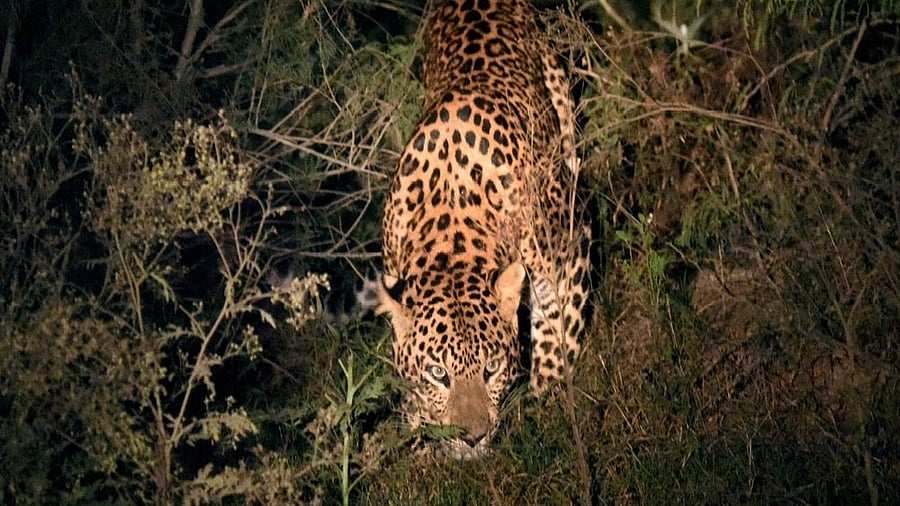
Representative image showing a leopard.
Credit: PTI File Photo
Bengaluru: Leopards are emerging as a major challenge in Karnataka's man-wildlife conflict management, coming next only to elephants and wild boars, but authorities have not yet woken up to the problem that is getting worse every year.
Despite the uptick in cases, the fortress model of conservation, which has limited the government's attention to protected areas, has led to a general ignorance towards landscapes that have historically supported the big cats.
A look at the data between 2022-23 and 2024-25 shows that leopards accounted for an average of over 4,500 conflict incidents every year, most of them related to loss of livestock, like sheep, goat, chicken and calves. Unlike wild boars, leopards have a higher threat perception due to the loss of livestock.
Though wild boars account for a high number of incidents, leopards beat them when it comes to the value of the assets damaged as well as threat perception.
While leopard-human negative interactions were lower compared to elephants, officials say the numbers are increasing over the last 10 years.
For a state whose conservation efforts have largely focused on tigers and elephants, leopards have emerged as a huge challenge. But the department has no data on the number of leopards in the state. Spaces of coexistence have turned into flashpoints due to the radical transformation of the pastoral landscapes, increasing human population, improper disposal of waste and commercial exploitation of common lands.
In Mysuru, forest officials have rescued a whopping 70 leopards since February 2023 and the numbers are going up every month. In Bengaluru, officials rescue about five leopards every year, but the expanding city is attracting more big cats.
Mysuru Deputy Conservator of Forests Basavaraja K N said in almost all the cases, a leopard straying into human habitat has come in search of dogs.
"The pattern of the big cats' movement will surely make it clear that they are coming primarily in search of the dogs, which are easy prey. The unscientific disposal of waste in the peri urban areas and the consequent increase in the number of stray dogs are a visible trend. Once they come for dogs, they start looking at other easy prey like livestock," he said.
He said an assessment of the leopard population is only part of the solution. "A major factor is the conservation of all natural landscapes, from forests to grasslands, that have acted as a buffer. It is true that situations, like leopards living in sugarcane plantations, can't be avoided all the time. However, there is an urgent need to implement the basics like solid waste management rules in urban and rural areas," he said.
In Bengaluru Urban division, where officials rescued a leopard from a house in the middle of Jigani town on April 3, Deputy Conservator of Forests N Ravindrakumar echoed the concerns.
"Agricultural lands, hillocks and grazing areas had helped the big cats thrive. Urban development needs to take into account the ecology of the region for reducing negative interactions with wildlife," he said.
Wildlife biologist Sanjay Gubbi said leopard conservation requires a range of strategies tailored to different landscapes. "Protected areas and reserved forests remain the strongholds for leopard populations," said Gubbi. "Our recent study found that nearly 30% of Karnataka’s landscape is suitable leopard habitat, much of which lies within these protected regions. However, poaching of prey outside protected areas remains alarmingly high and must be urgently addressed."
On a possible leopard census, Principal Chief Conservator of Forest (wildlife) Subhash K Malkhede said: "We have to check whether emerging technology like artificial intelligence will help us. We will hold a discussion with experts very soon and take a decision on the matter. Before we count them, we can start saving the landscapes that support them."